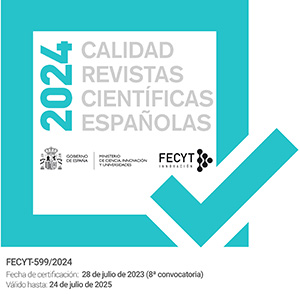Características morfométricas de la red parafluvial de la comarca de la Manchuela (Albacete)
DOI:
https://doi.org/10.5944/etfvi.12.1999.2574Abstract
El valie del Júcar a su paso por el norte de la provincia de Albacete, en el borde suroriental de la Submeseta sur, se caracteriza por la presencia de una red parafluvial. Ésta drena al Júcar, de manera ocasional, importantes descargas de caudal coincidiendo con intensas precipitaciones asociadas a situaciones atmosféricas de «gota fría», características del ámbito mediterráneo. Las diferentes ramblas del sector presentan una morfometría muy condicionada por la disposición del relieve y la heterogeneidad litológica, este aspecto es el analizado en el presente trabajo.
The Jucar river valley in the northiern of the Albacete province, has a parafluvial system (dry valleys). Sometimes tipical atmospherics situations associated at the mediterranean sea, are the origin of strongs precipitations. This high precipitations made overfloods and genérate importants catastrophic situations. The dry valleys denominated ramblas in the área presents a morphometry conditionated by the litology ad orographic aspects.
Downloads
Downloads
Published
How to Cite
Issue
Section
License
Authors who publish in this journal agree to the following terms:
- Authors retain copyright and grant the journal right of the first publication with the work simultaneously licensed under a license Creative Commons Reconocimiento-NoComercial 4.0 Internacional that allows others to share the work with an acknowledgement of the work's authorship and initial publication in this journal.

- Authors are able to enter into separate, additional contractual arrangements for the non-exclusive distribution of the journal's published version of the work (e.g., post it to an institutional repository or publish it in a book), with an acknowledgement of its initial publication in this journal.
- Authors are permitted and encouraged to post their work online (e.g., in institutional repositories or on their website) prior to and during the submission process, as it can lead to productive exchanges, as well as to earlier and greater citation of the published work (See The Effect of Open Access).







